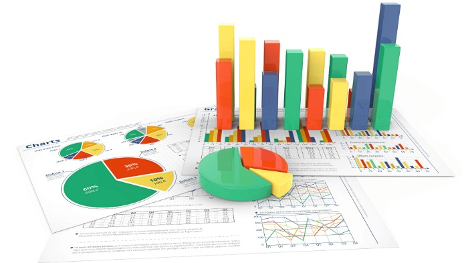
20 Jan The Complete Guide to ESG Reporting for the Middle Market
Are you a middle-market company looking to unlock your sustainability potential? The world is changing quickly, and the pressure to reduce emissions, conserve resources, and demonstrate social responsibility is more significant than ever. However, implementing an effective ESG strategy is just one- part of the ESG puzzle. Knowing how to effectively report on your ESG (Environmental, Social, and Governance) initiatives can make all the difference in your success. Questions about ESG reporting and worldwide standards are common among my clients. This journal post will provide a comprehensive guide to ESG reporting. Read on to learn all that you need to!
What is ESG reporting?
ESG reporting is a tool that companies use to assess and disclose their non-financial performance in three critical areas: Environment, Social, and Governance. Typically, this report has several sections, such as corporate governance and ethical initiatives, environmental policies and activities, and social responsibility programs that address workplace safety, employee diversity, product safety standards, human rights, and more.
By measuring these sustainability indicators, a company can better understand how it is affecting the world it operates in and take corrective actions for any less-than-desired performance or results.

Why is ESG reporting important for middle-market companies?
As the term suggests, middle-market companies are establishments of intermediate size in terms of their scale of operations. The annual revenue of these businesses usually falls between $10 million and $1 billion, and their employee size ranges from 100 to 2000. In the U.S., over 200,000 middle-market companies are responsible for close to 33% of the nation’s GDP.
Environmental, Social, and Governance (ESG) reporting is optional for these mid-level entities; however, it can still be an essential factor for them moving forward as sustainability has become a significant business imperative. Such reporting allows mid-market companies to identify ESG risks associated with their businesses and take preventative measures to mitigate their potential impact on corporate agility, resilience, and trustworthiness so that they can fend off competition from more prominent players and remain competitive in 2023 and beyond.

How can middle-market companies collect ESG data?
ESG reporting for middle-market companies can be streamlined through internal data collection, surveys, and external sources. By monitoring activities directly related to the company’s operations, such as carbon emissions and social initiatives, organizations can develop an accurate inventory of information that they can use to evaluate their performance.
To gain insight into consumer sentiment, companies may consider distributing surveys or polls to analyze behavior trends to create more sustainable market strategies. External sources like government reports, news media analysis, and research papers may also provide vital information about regional or industry-wide operating standards. All of which would give middle-market organizations greater insight into their ESG performance and help unlock their sustainability potential.

What are the best ESG reporting frameworks?
Numerous ESG reporting frameworks are available, each offering different guidance levels for disclosure. To help mid-market businesses navigate this process, we have identified some of the leading ESG reporting frameworks worldwide.
Global Reporting Initiative (GRI)
The Global Reporting Initiative (GRI) was founded in 1997 by the United Nations Environment Programme. The leading ESG reporting framework provides organizations with guidance on reporting their sustainability performance best. It helps small and mid-market businesses take an integrated approach to transparency, accountability, and sustainability.
Being an international framework, GRI provides comprehensive guidelines for reporting on key sustainability topics such as climate change, human rights, labor practices, and corporate governance. GRI’s standards have been used as the basis for sustainability reports in more than 100 countries worldwide for over 25 years.
Task Force on Climate-related Financial Disclosures (TCFD)
The Financial Stability Board created the Task Force on Climate-Related Financial Disclosures (TCFD) in 2015 to help companies, banks, and investors provide relevant ESG information to their internal and external stakeholders. Through a voluntary disclosure framework, organizations can collect data about potential climate-related risks and opportunities and report it in an organized way.
The TCFD enables businesses of all industries to assess their vulnerability to pre-existing environmental regulations and potential future policy changes caused by the changing climate. Additionally, it facilitates transparency in financial markets by providing greater visibility into the impacts of climate risk so organizations can make informed decisions on how best to adapt their strategies.
Utilizing TCFD’s recommendations for ESG reporting can create cost savings for mid-market businesses over time by helping them anticipate potential problems before they arise.
Sustainability Accounting Standards Board (SASB)
The Sustainability Accounting Standards Board (SASB) was founded in 2011 by Jean Rogers to help businesses and investors effectively manage ESG reporting. With SASB’s comprehensive framework, companies can measure their sustainability performance across five essential areas of environment, social capital, business model and innovation, human capital, and leadership and governance.
The non-profit organization offers this service for 77 different industries across 11 sectors, making it easy for businesses of all sizes to stay informed on the most current standards and ensure they meet environmental regulations.
Additionally, standardizing ESG reporting makes it easier for investors to compare different companies in an apples-to-apples fashion. By helping middle-market companies make sense of their ESG objectives, SASB provides a valuable tool for gaining a competitive advantage.
How can a middle-market company prepare an ESG report?
A middle-market company should consider preparing an ESG (Environmental, Social, and Governance) report better to showcase its corporate sustainability and social responsibility efforts. This report gives stakeholders insight into the company’s environmental impact, social initiatives, and governance performance.
When creating an ESG report, it is essential to establish a framework first. A framework provides a structure for the report that sets out its purpose and objectives, the scope and content of the topics covered, information sources used, methods used for data collection or analysis, and how readers can use the report findings. It should also include details about how often it will be updated or revised in the future.
Once the framework has been established, companies should develop a plan for collecting data related to their ESG initiatives. This may involve surveying employees, conducting focus groups; reviewing existing documents; consulting experts; or gathering data from third-party sources such as trade associations and government agencies. The types of information collected should cover each aspect of ESG—environmental indicators such as energy usage or emissions reductions; social metrics such as diversity policy compliance; and governance aspects like board composition or executive compensation practices.
The next step is organizing this data into a format that is easy to understand. Companies should consider using charts, graphs, and visuals to explain their results better while highlighting critical points in narrative form. Once finalized, they can publish the completed ESG report so stakeholders can access it online or in print format if desired.
Finally, companies should create a communication strategy for disseminating their ESG report results, both internally within their organization as well as externally with external stakeholders such as shareholders and media outlets. This could include distributing press releases about milestones achieved or hosting webinars to discuss key findings with interested parties.
By following these steps, middle-market companies can create an effective ESG report that helps them showcase their sustainability goals while also providing transparency into their operations for increased stakeholder engagement.
What are the benefits of ESG reporting?
The benefits of ESG reporting for middle-market companies are multifaceted and can significantly boost financial performance and public perception. Here are seven key advantages to consider:
1. Increased Investor Attention
Engaging in ESG reporting provides a significant opportunity to attract more investors. An increasing number of investment funds now actively seek out companies that demonstrate responsible practices regarding environmental, social, and corporate governance (ESG) criteria.
2. Improved Financial Performance
Companies that demonstrate better ESG outcomes tend to outperform those with weaker or no ESG management practices over the long term. This is especially true during market uncertainty or volatility, where ESG-focused firms are more resilient and can often provide higher returns than non-ESG counterparts.
3. Reduced Risk
By engaging in proactive disclosure regarding ongoing sustainability initiatives, middle-market companies can reduce their legal and reputational risk by keeping stakeholders well-informed and helping manage potential crises before they arise.
4. Enhanced Public Perception
Organizations that report their sustainability efforts enjoy significantly greater public perception than those that don’t and, in turn, gain a competitive advantage over businesses that fail to engage in similar ESG practices.
5. Improved Cost Savings
Sustainable business practices offer cost savings from using fewer resources and optimizing operational efficiency and the potential to generate new revenue streams from developing innovative green products or services.
6. Regulatory Compliance
Having ESG reporting systems in place positions middle-market companies to confidently comply with any regulations that may arise in the future. This can give them a competitive edge, as they will already be prepared and well-equipped to adhere to the new rules, enabling a faster response than their peers.
7. Talent Attraction & Retention
Prospective employees increasingly look for employers who take environmental and social responsibility seriously when considering job offers, so those businesses with an ESG strategy have an edge when hiring the most talented staff available today.
What are the environmental, social, and governance risks?
Environment, social, and governance (ESG) risks are ever-changing, and as a middle-market company, there are certain ESG risks of which you should be aware. These include climate risks, such as rising temperatures or extreme weather events that could damage property or disrupt operations; governance risks, such as the increasing demand for ethical behavior and transparency; and principal risks related to employees, vendors, and customers who may come across unscrupulous or unethical activities.
It is vital to research these potential ESG risks and develop a strategy for how to cope with them to protect your company’s reputation and ensure its sustainability for the long haul.
Why is ESG information necessary for today's middle market?
ESG information allows companies to evaluate and demonstrate their ethical values. ESG data can give shareholders a better understanding of the sustainability of investments, helping to attract new investors seeking a sustainable investment that considers social and environmental impacts.
Furthermore, understanding the importance of ESG information can help middle-market companies prioritize initiatives that align with corporate values and long-term success. Investments in ESG initiatives have the potential to provide lasting value for all stakeholders in the company, from employees to investors.
Conclusion
ESG reporting is an invaluable tool for middle-market companies to assess, manage and communicate their sustainability efforts. The benefits of ESG reporting are far-reaching; it provides a comprehensive approach that helps protect investors while supporting long-term success for all stakeholders involved.
Now is the time for middle-market companies to get ahead of the curve and truly embrace sustainable practices that will bring rewards both financially and philanthropically. Act now by evaluating your organization’s ESG data and designing strategies for sustained success!
FAQs

How can mid-market companies improve corporate governance?
Mid-market companies can improve corporate governance by enhancing disclosure policies, establishing strong internal controls and compliance protocols, and instituting a board of directors with diverse perspectives. These steps will help create an organizational culture that prioritizes corporate compliance.
Will ESG disclosures fight climate change?
Yes, ESG disclosures can play an essential role in fighting climate change. Through quantitative and qualitative disclosures, companies can engage consumers, employees, investors, and other stakeholders to relate more effectively to environmental sustainability. An ESG disclosure can also hold a business accountable for its policies and behavior related to climate change and motivate it to shift corporate behavior towards a lower-carbon economy.
What are the most significant ESG issues in the middle market?
The most significant ESG issues in the middle market are related to environmental protection, social impact, and corporate governance, all intertwined. These factors have become increasingly important to investors in this market, as a company’s success largely depends on how well it tackles ESG factors.
What is the difference between ESG reporting and sustainability reporting?
ESG reporting is a framework focusing on a business’s environmental, social, and governance aspects. In contrast, sustainability reporting takes a holistic perspective to measure a company’s progress in economic efficiency, environmental stewardship, and social responsibility.
How can sustainability reports help companies plan their future?
Sustainability reports (commonly known as ESG reports) enable companies to assess their long-term objectives while measuring their impact on the environment. By analyzing their business practices alongside societal trends, companies can plan for their future by engaging in more efficient strategies and setting achievable goals.
What is the Non-Financial Reporting Directive (NFRD)?
The Non-Financial Reporting Directive (NFRD) is an EU-wide legislative requirement for larger companies and groups to include non-financial information in their annual reports. It provides comprehensive reporting on how an undertaking’s business model incorporates social, environmental, human rights, and anti-corruption objectives.


